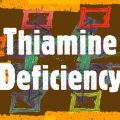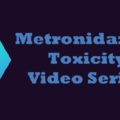Patterns in life repeat across all ecosystems. We are nothing but circles upon circles of iterative patterns. It does not matter whether we are contemplating patterns of intellectual thought, behavior, or biology, the pattern and cycles of growth and implosion remain. When one circle collapses, another emerges, a little different but similar enough to be recognizable. In the early stages of a cycle, feedback loops are common, but in the latter stages and before collapsing, they become feedforward, endlessly escalating until collapse.
In feedback systems, inputs induce adaptive changes of accommodation. Think of how a thermostat controls heat. When the temperature rises, the thermostat feedbacks to the furnace to turn it off. Similarly, when the temperature cools, it signals the furnace to turn on. In a feedforward loop, there is nothing to regulate the temperature, so as the temperature rises, it would signal the furnace even higher. Most biological systems, excluding some hormonal cues, operate as feedback loops, up until a point. Feedback systems require energy to maintain; feedforward systems, not so much. When the energy runs out, input feeds forward and adaptive changes of accommodation escalate until the last and bitter end.
I was reminded of these patterns a few months back by two seemingly disparate observations: a twitter thread on the closed intellectual systems that feed upon themselves in political social media and a scientific article warning that the threshold for environmental carbon cycles where damage enters a feedforward loop is fast approaching. These, of course, come against the backdrop of my work on mitochondrial illness; perhaps among the clearest examples of cycles gone awry. Mitochondria, the comptrollers of cellular energy, are exceeding adaptable to existential threat. So long as the accounts are balanced favorably towards energy availability, systems keep running. When the energy runs out, however, what are meant as temporary adaptations with clear feedback mechanisms, become more permanent, forever escalating ill-health until the tissue, organ, and eventually the human in which they reside, collapse. Mitochondrial collapse, at its most basic level, is death. For without energy, not even breath is possible. Both the twitter thread and the Nature article reminded me of how perilously close we are to that collapse ideologically and biologically.
Of Collapsing Epistemes and Ecosystems
Some months ago, I stumbled upon a particularly prescient twitter thread that used the term ‘epistemic closure‘ to describe political social media. Briefly, an episteme is a Greek philosophical term that refers to the rules by which knowledge is determined and accepted e.g. how we know what we think we know. From a paper I wrote last year.
An episteme refers to a system of understanding that is, in many regards, codified culturally by the acceptance of others. Those who study epistemology are interested in understanding the conditions for, and structures of, knowledge as it applies to systems of thought like those employed in science, politics, or culture. In general, epistemology ask questions about how ‘truth’ is defined, who is allowed to speak about truth, and how these truths are disseminated. The how and the who of epistemic knowledge are important considerations when evaluating systems of thought as they are often deeply entangled in webs of influence that may or may not be clear to those operating within that system.
The gist: An episteme is like a circle; an open circle when it is healthy and a closed and shrinking one when it approaches collapse. Its rules define what those within that circle consider knowledge or truth, as well as by whom and how truth can be determined. It is important to note that each of us operates under these dictates of epistemic knowledge. We exist in these circles of cultural, religious, political, and other norms. In many regards, these circles provide the heuristic that allows us to navigate informational or belief systems by caveat and without thinking through the problems ourselves. The epistemic circle serves a biasing function that guides decision-making and it is a necessary survival mechanism. Success and even survival within a particular episteme requires us to abide by these rules.
Consider each of the groups that you belong to beginning with macro groups like country and religion down to the smaller groups like work and family. Notice that there are rules, some spoken, others not, about what each group considers acceptable knowledge or behavior; rules that if you want to succeed or survive, you must abide. Many of these rules are so entrenched that we have internalized them and no longer pay them any heed. They are there though and they mark the boundaries of the epistemes under which you live. Now consider whether those rules are healthy, whether there are mechanisms of feedback in place, of dissent or correction, or whether they are feeding forward and simply amplifying a particular power structure or ideology. With the former, there is opportunity for evolution. There are still rules and power structures, but dissent and growth are possible. With the latter, there is not. The episteme is approaching implosion.
Epistemic Closure and Feedforward Loops
If an episteme determines the rules by which truth and understanding are deemed acceptable, then epistemic closure would indicate a closed system of understanding; a closed circle. In the thread I mentioned above, the author was referring to a particular type of political media and to an ideological ecosystem that was not necessarily closed off from dissenting views but one with mechanisms in place that would not only allow for the active rejection of any and all contrary evidence or views, but demanded it. Within this system of epistemic closure, no matter what was presented there were mechanisms in place to ensure that rightness of one’s views could never be challenged, only magnified and reinforced. In this regard, all contrary evidence or ideas become proof supporting the certainty of a particular perspective. It was a feedforward loop. While this gentleman was referring to political ideology, it is difficult not to see the same processes involved in pharmaceutical marketing. Indeed, I would argue that the mechanisms of maintaining epistemic closure have a long and entrenched history in the pharmaceutical and chemical marketing. Think about how tobacco, vaccines, or really any drug or environmental chemical is marketed to the public; how dissent is not only squashed but turned around against the dissenter in a manner that strengthens the manufacturers message of safety and/or efficacy. Closed political systems hold tight to the tobacco playbook.
The second example came from an article published in the journal Nature about environmental warming, and specifically how warming affects soil based carbon cycles. The gist of the modeling presented suggested that we have only 2 more degrees Celsius of warming before we switch to an essentially feedforward loop of environmental destruction. The authors used the term carbon feedback to describe the situation, and the math used to model the phenomena was quite linear, but the data they presented were suggestive of a feedforward type of reaction, one where each new input strengthened the progression towards catastrophe; the point at which it would become impossible or nearly impossible to reverse course and the point at which the ‘energy’ required to flip back to a feedback system, was insurmountable.
In my work with mitochondrial illness, I see patterns like this regularly. Ideologically, mitochondrial illnesses are so complex that they defy our current epistemic understanding of what illness looks like, and as a matter of course, those within the epistemic bubble that is modern medicine, decry their very existence. These illnesses are attributed to psychosomatic origins, filed in the ever expanding ‘all-in-the patient’s-head’ category. The reasoning is such that if an illness does not respond to an available medication, and often a laundry list of medications, it must not be real. The non-response becomes the proof, a proof that is constantly reinforced and magnified with each new failed treatment. Much like the closed political ideologies, no amount of evidence will convince the ‘inside-the-circle’ group of what veracity of the ‘outside-the-circle’ group sees or experiences. In no small part due to decades long information campaigns touting the benefits of this particular medical ideology, all evidence from the out-groups serves only to reinforce the beliefs of the in-group. It is a collapsing circle.
Climate change follows the same pattern. Its causative factors, the pervasive use of toxic chemicals that overwhelm the ‘environment’s’ ability to effectively manage these insults, follows the same pattern of collapse we see in human mitochondrial health. Both are prefaced on the notion that all we need are better chemicals. Indeed, the entirety western health, whether it is human or environmental, relies upon on the notion that not only are these chemicals rarely deleterious to health, but they are necessary for health. As with the political groups, those within the circle of the current medical paradigm never see the problems with chemical toxicities, except within the narrow confines of anaphylaxis. When chemical toxicities appear, a more open circle episteme would address it and correct accordingly. A closed circle, a settled science, sees only the need for another chemical. Damage is not indicative a failure or a cue to readjust but rather reinforces the belief that the answer resides in what we already know – more chemicals.
That is where we find ourselves now, in a closed circle, endlessly reinforcing our own beliefs about health, the environment, politics, and culture, coming perilously close to the collapse of each.
We Need Your Help
More people than ever are reading Hormones Matter, a testament to the need for independent voices in health and medicine. We are not funded and accept limited advertising. Unlike many health sites, we don’t force you to purchase a subscription. We believe health information should be open to all. If you read Hormones Matter, like it, please help support it. Contribute now.
Yes, I would like to support Hormones Matter.
Image credit: Bike parking lot. Free public domain CC0 photo. ID : 6040888
This article was published originally on March 1, 2021.























